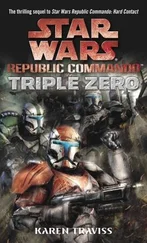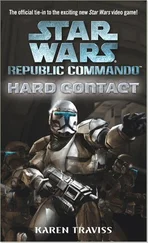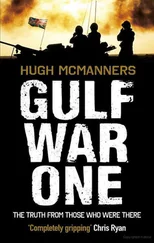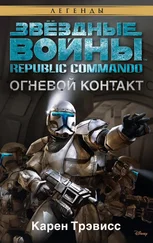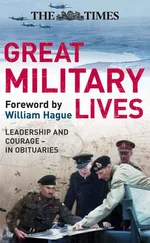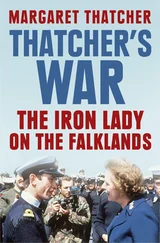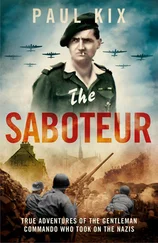Hugh McManners - Falklands Commando
Здесь есть возможность читать онлайн «Hugh McManners - Falklands Commando» весь текст электронной книги совершенно бесплатно (целиком полную версию без сокращений). В некоторых случаях можно слушать аудио, скачать через торрент в формате fb2 и присутствует краткое содержание. Город: London, Год выпуска: 2014, ISBN: 2014, Издательство: Nightstrike Publishing, Жанр: nonf_military, Биографии и Мемуары, на английском языке. Описание произведения, (предисловие) а так же отзывы посетителей доступны на портале библиотеки ЛибКат.
- Название:Falklands Commando
- Автор:
- Издательство:Nightstrike Publishing
- Жанр:
- Год:2014
- Город:London
- ISBN:978-0-992-81540-0
- Рейтинг книги:4 / 5. Голосов: 1
-
Избранное:Добавить в избранное
- Отзывы:
-
Ваша оценка:
- 80
- 1
- 2
- 3
- 4
- 5
Falklands Commando: краткое содержание, описание и аннотация
Предлагаем к чтению аннотацию, описание, краткое содержание или предисловие (зависит от того, что написал сам автор книги «Falklands Commando»). Если вы не нашли необходимую информацию о книге — напишите в комментариях, мы постараемся отыскать её.
Falklands Commando — читать онлайн бесплатно полную книгу (весь текст) целиком
Ниже представлен текст книги, разбитый по страницам. Система сохранения места последней прочитанной страницы, позволяет с удобством читать онлайн бесплатно книгу «Falklands Commando», без необходимости каждый раз заново искать на чём Вы остановились. Поставьте закладку, и сможете в любой момент перейти на страницу, на которой закончили чтение.
Интервал:
Закладка:
The casualties would be looked after as well as could possibly be managed, and so we made the most of the extra 24 hours breathing space that Bluff Cove had given us. I was very grateful for this extra time. Life on the front line is very much about living now. Sadness and the dead are put to one side until it is all over.
The Bluff Cove bombings killed some forty soldiers, and as with several other losses of life throughout the campaign, was badly handled by the MoD and Whitehall. Daily Star journalist Mick Seamark, witnessed the entire incident including the dramatic attempts by helicopters to rescue men from the burning ships. Seamark wrote what he described later as the most moving story he’d ever covered, despatching his copy by helicopter to one of the ships for transmission back to the MoD.
But his copy was ‘lost’ – most likely by MoD censors. The then Commander UK Land Forces General Sir John Stanier admitted its loss “was never satisfactorily accounted for”. The Daily Star published the story after the war as ‘The article the Ministry would not let you read at the time.’
Radio ham radio operators circulated reports of thousands of casualties. Buenos Aires quickly reported British losses as being the best part of a battalion. In reality, a third of the Welsh Guards were killed or wounded, which, coupled with the loss of equipment, did effectively put their battalion out of action.
The MoD agreed not to issue any casualty figures until after the final battles, because to do so would help the Argentinians. However, Bernard Ingham, Prime Minister Thatcher’s press secretary, accompanying her on a trip to Dusseldorf, was asked about the most badly hit ship the Sir Galahad and said, “I can’t think why everybody is making such a fuss about this, only forty people were killed.”
The then Army director of Public relations Brigadier David Ramsbotham told me afterwards: “He had no contact with the MoD, this was a purely MoD matter, and none of Bernard Ingham’s bloody business. Public relations in a war are nothing to do with protecting the reputation of a minister. ‘Gotcha’ type headlines persisted because people like Bernard Ingham at the very top weren’t thinking through the implications. If they weren’t being responsible, what could one expect of the editors?
After the war, when the piles of backdated newspapers finally reached us, we were to be very shocked and disappointed by the lurid, jingoistic newspaper headlines.
9 June was a relaxed day on Sir Lancelot . I spent the time trying to clarify what we were to do once we managed to get ourselves onto Beagle Ridge.
My prime role had been to shell the C130 transport aircraft using the airport after dark. Then this was changed to that of gathering information and engaging any targets I could see. This presented me with a dilemma that was never resolved: did this mean military targets only, outside Port Stanley, or could they include military targets in the town itself?
We were not supposed to engage targets near any settlement. Firing near hospitals was totally banned, and as they were protected by the sign of the Red Cross, firing near them would also be a serious breach of international law. So how close to hospitals could I fire, and what were the targeting priorities?
As I pored over air photos and town plans, I realised that the Argies had interspersed their radar sites, troop accommodation and helicopter landing areas, between the civilian houses. All their Chinook helicopters were parked outside the town hospital, and as these medium lift aircraft were the means by which they could launch a surprise counter-attack on our vulnerable rear areas, this helicopter landing-site was an exceptionally high priority target for me. If we lost this war and I survived, it seemed to me that a war crimes trial was my most likely fate.
Beagle Ridge is part of the line of hills to the north of Stanley, about 6km from the town. The ridge rises fairly sharply from the Murrell River valley and is pitted with steep rock outcrops, which provide protection and cover. It is the coldest, bleakest place imaginable.
We would be just about as isolated as it was possible to be, deep behind enemy lines, far from any help or reinforcement. The enemy were known to be on the surrounding features, with an observation post 1000 metres to the north, and on nearby Mounts Round and Low, as well as the twelve thousand or so troops thought to be in Port Stanley, on Wireless Ridge, Mount Longdon and on the Two Sisters. The nearest friendly forces were 19km to the northwest on Mount Kent, and the Paras about 13km away on Long Island Mount.
I was worried about getting us into place on Beagle Ridge without being spotted. However, once we managed to insinuate ourselves on to the Ridge, we’d be hard to find. Provided nothing happened to draw attention to us, we should be able to remain undetected. However, this was pretty hopeful… the ridge was comfortably within the range of all the Argentine medium and field artillery massed in and around Stanley. Intelligence reports indicated that in addition to the enemy positions surrounding Beagle Ridge, helicopter patrols kept the area under regular surveillance.
My evaluation of the operation was nevertheless positive. The value of having one of our teams on Beagle Ridge I thought far outweighed the risks involved, and I was in no doubt that once there we’d provide good value for money. But the night helicopter insertion was an unknown factor. After the Sea King crash that killed eighteen members of D Squadron SAS, I was uneasy about helicopters. I knew I wouldn’t feel entirely confident until the Sea King had flown away and we’d waited the necessary half hour or so to ensure that a curious enemy were not coming to investigate the engine noise.
At dinner that night Lieutenant Martin Eales, a Sea King pilot from Fearless who was to fly us in, joined us. I’d got to know Martin a little in Canberra and Fearless on the trip down, and his presence cheered me up greatly. He looked drawn and tired, having been flying all the hours the aircraft could stand. He was equipped with passive night goggles (PNG) so darkness was no problem. These goggles intensify tiny amounts of ambient light in what appears to be a completely dark night, to give a green image. But they give the pilot a narrow ‘tunnel’ vision, so he has to constantly move his head from side to side, and up and down in order to see to fly. The weight of the goggles (about 3lbs) and his flying helmet (another 3 or 4lbs) and the consequent eyestrain, produced splitting headaches after half an hour or so. It also meant he had to fly round the clock, resting in snatches whenever he could.
The overwhelming need for helicopters required pilots to ignore peacetime rules and flying regulations in order to get the many vital tasks done. Each aircraft has very precise tables that stipulate the maximum number of men and weights of equipment that can be carried. These figures had rapidly proved unrealistic in wartime, because of the vast amount of ammunition we needed to carry.
On our Fanning Head operation we’d carefully loaded exactly the right weight of men and equipment into the aircraft, which had been able to take off. It was bloody dangerous – but not when taking off, because if the aircraft was too heavy, when the pilot applied maximum power and lift, it simply didn’t leave the deck. The dangerous bit was landing, which needs more power than takeoff. An aircraft too heavy to land, can’t stop in time to make a sideways hover, and crashes into the flight deck. So once you took off, there was no question of re-landing until you’d burned off a lot of fuel…
So as these grossly overloaded flights were usually travelling some distance, as the fuel was used up, the overload reduced until a landing was possible at the other end. In emergencies, aircraft could only land after dumping fuel or load.
Читать дальшеИнтервал:
Закладка:
Похожие книги на «Falklands Commando»
Представляем Вашему вниманию похожие книги на «Falklands Commando» списком для выбора. Мы отобрали схожую по названию и смыслу литературу в надежде предоставить читателям больше вариантов отыскать новые, интересные, ещё непрочитанные произведения.
Обсуждение, отзывы о книге «Falklands Commando» и просто собственные мнения читателей. Оставьте ваши комментарии, напишите, что Вы думаете о произведении, его смысле или главных героях. Укажите что конкретно понравилось, а что нет, и почему Вы так считаете.

